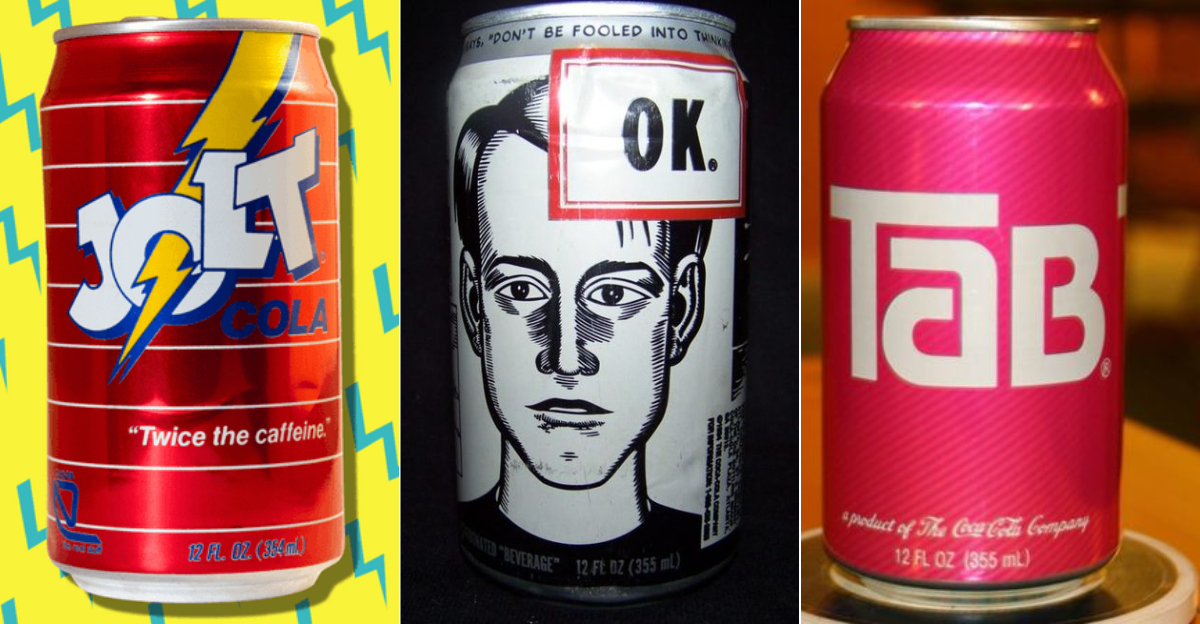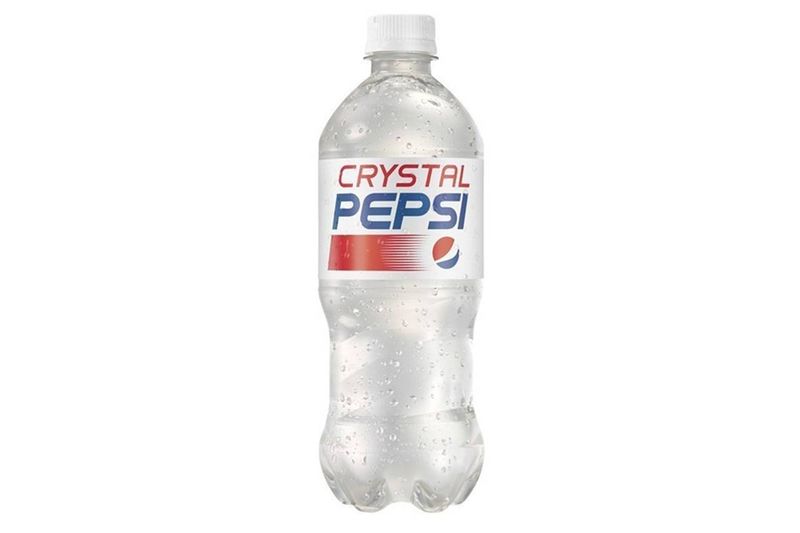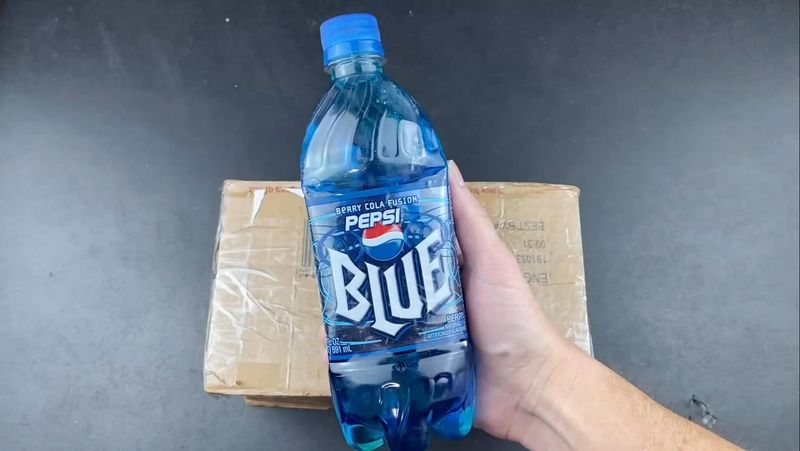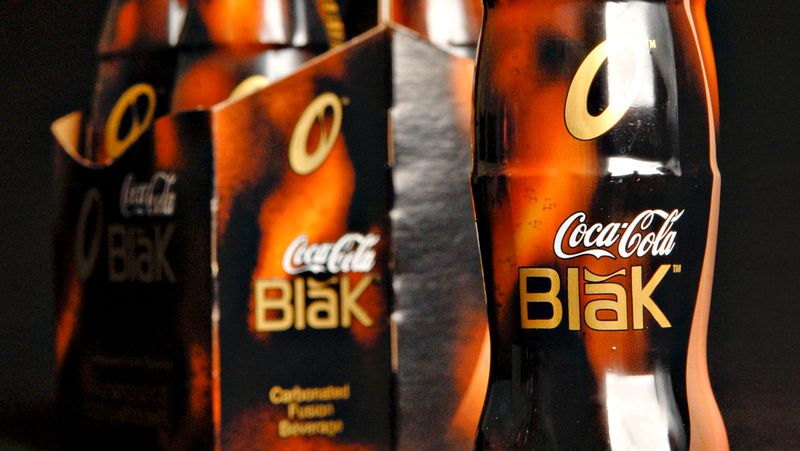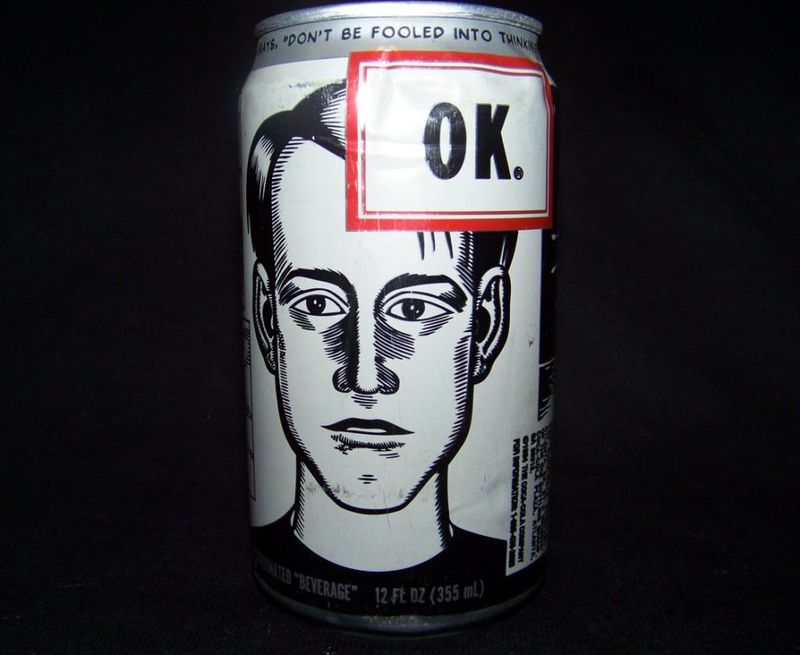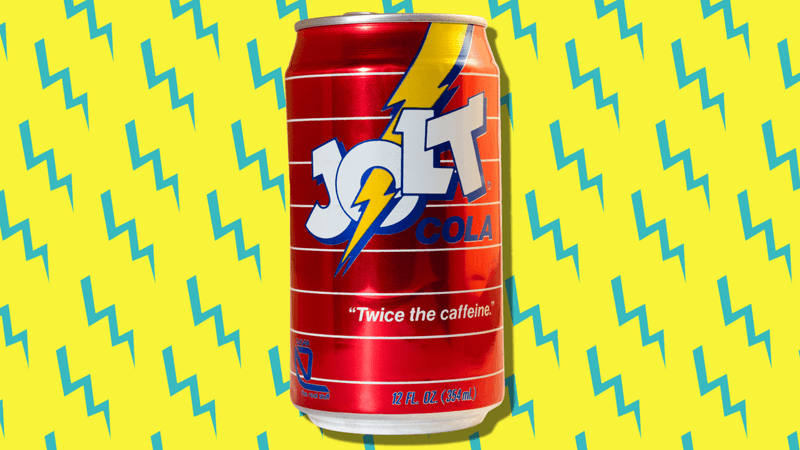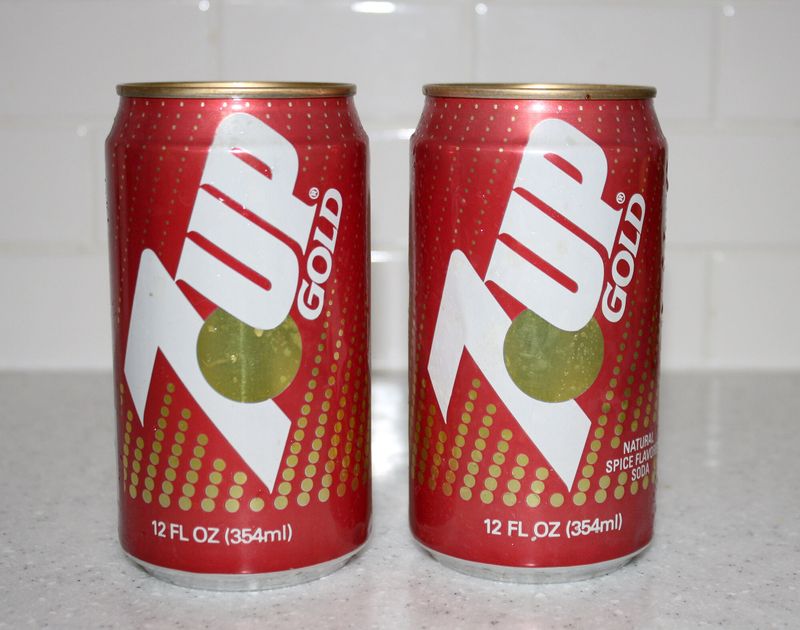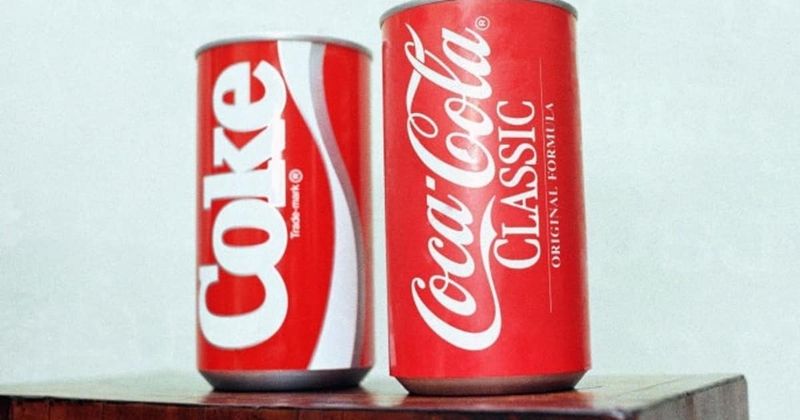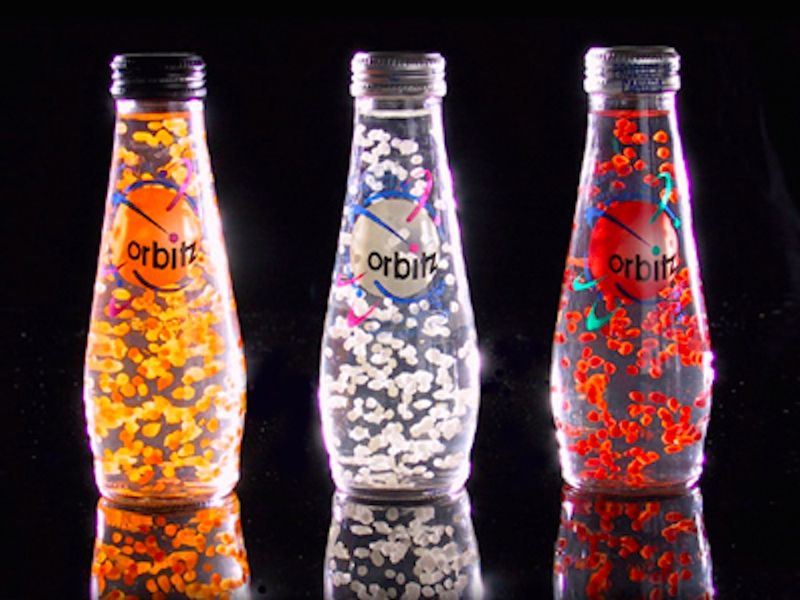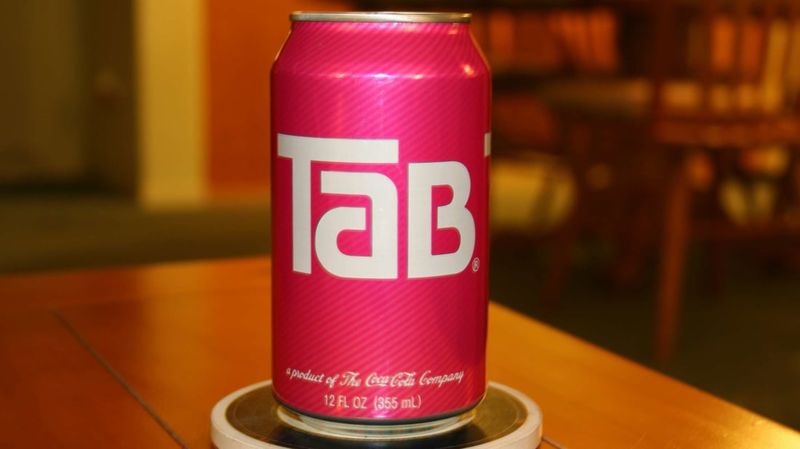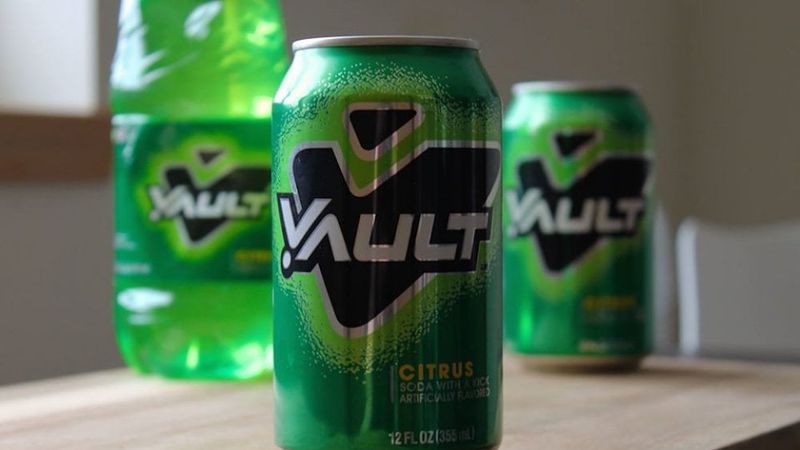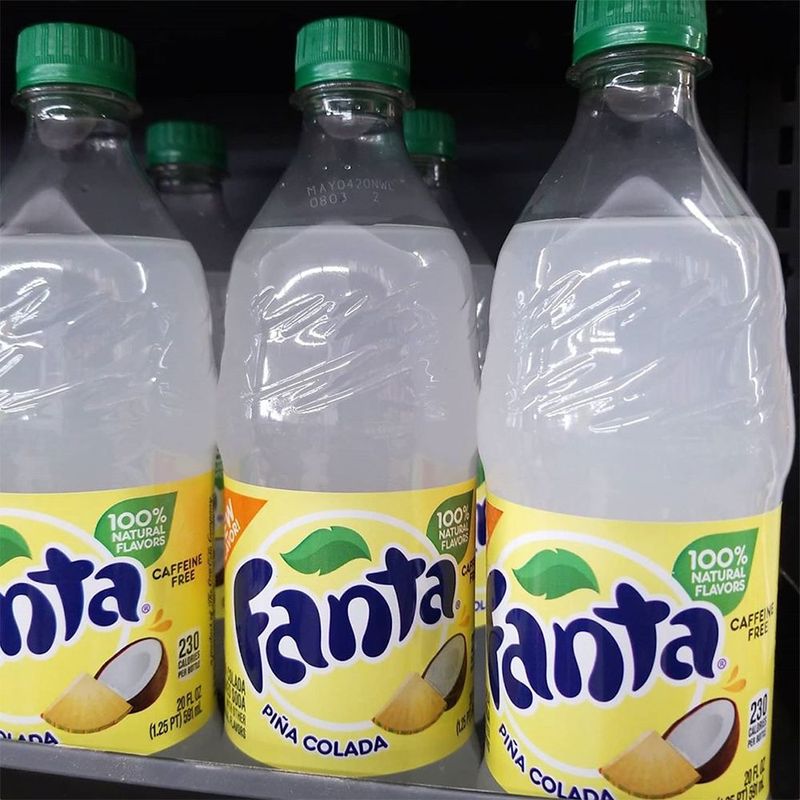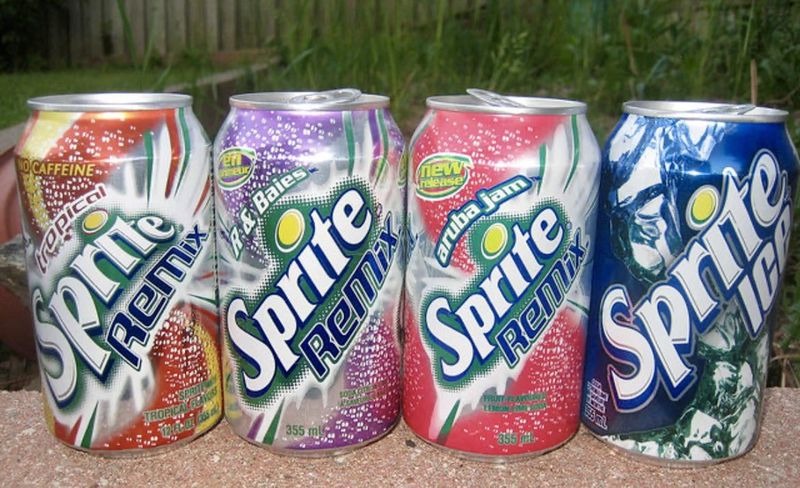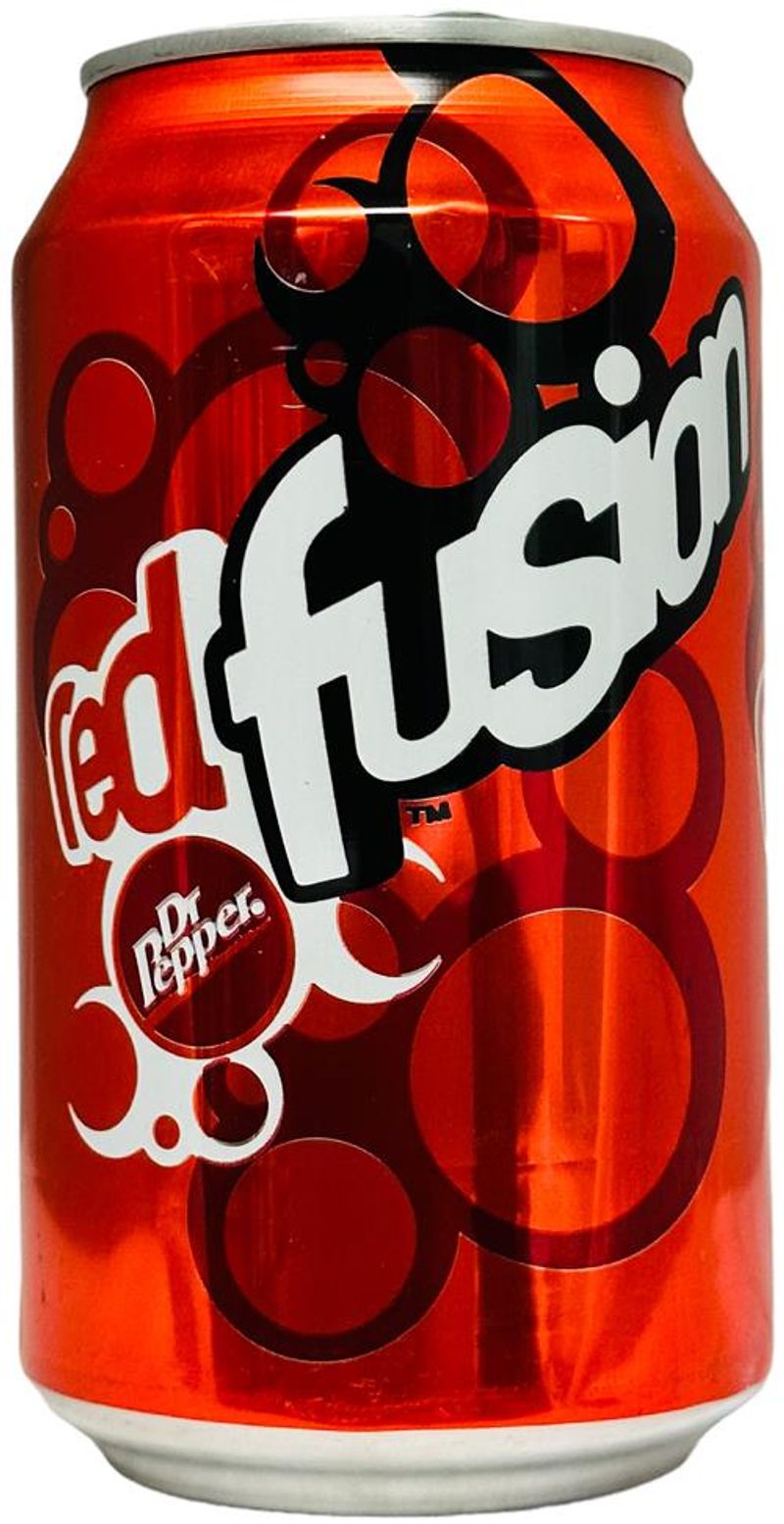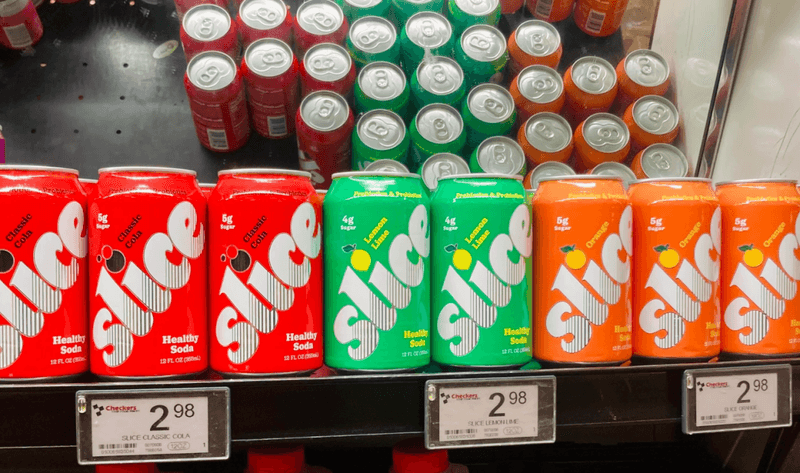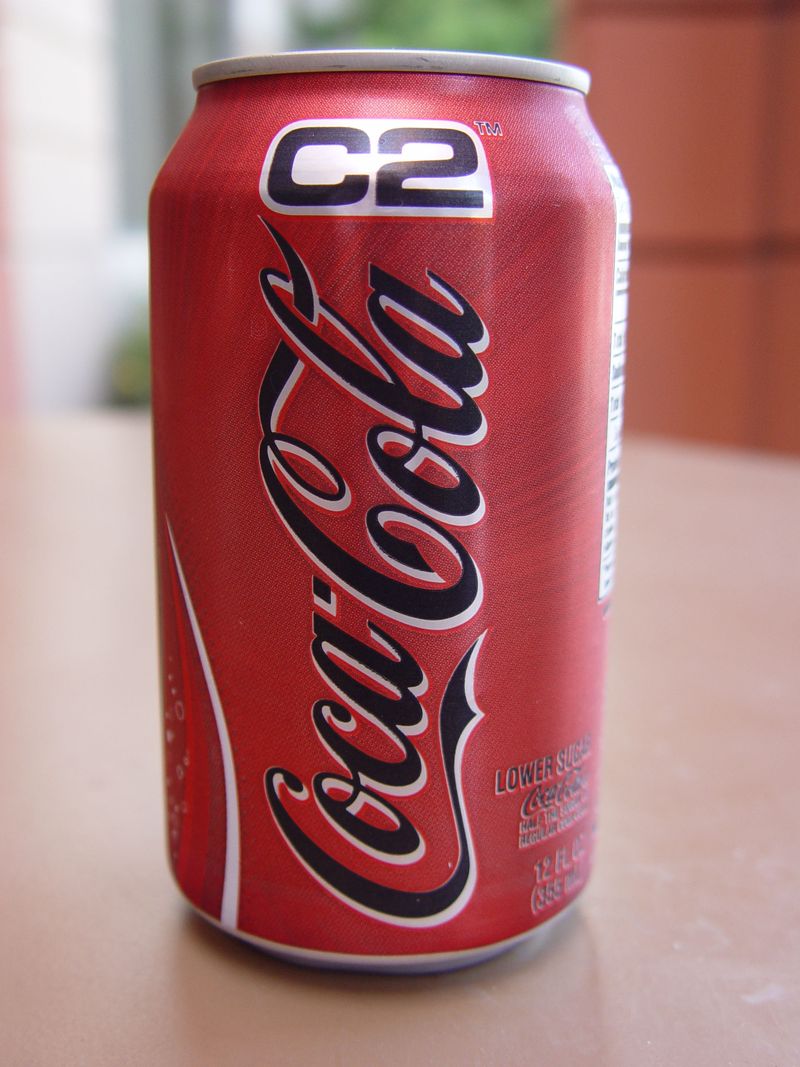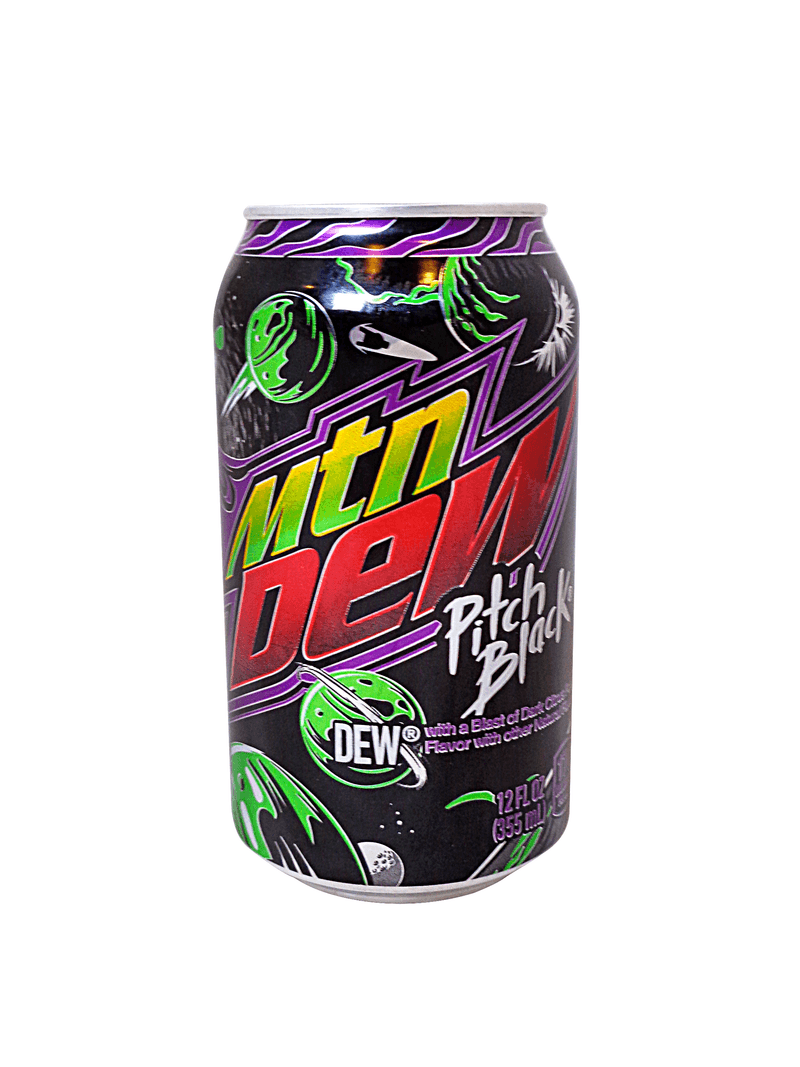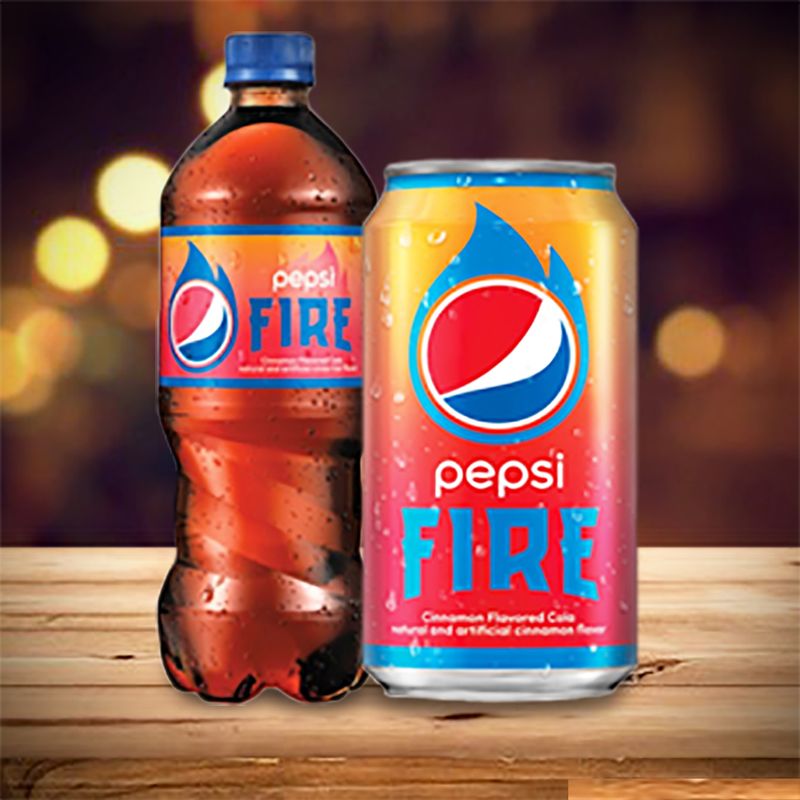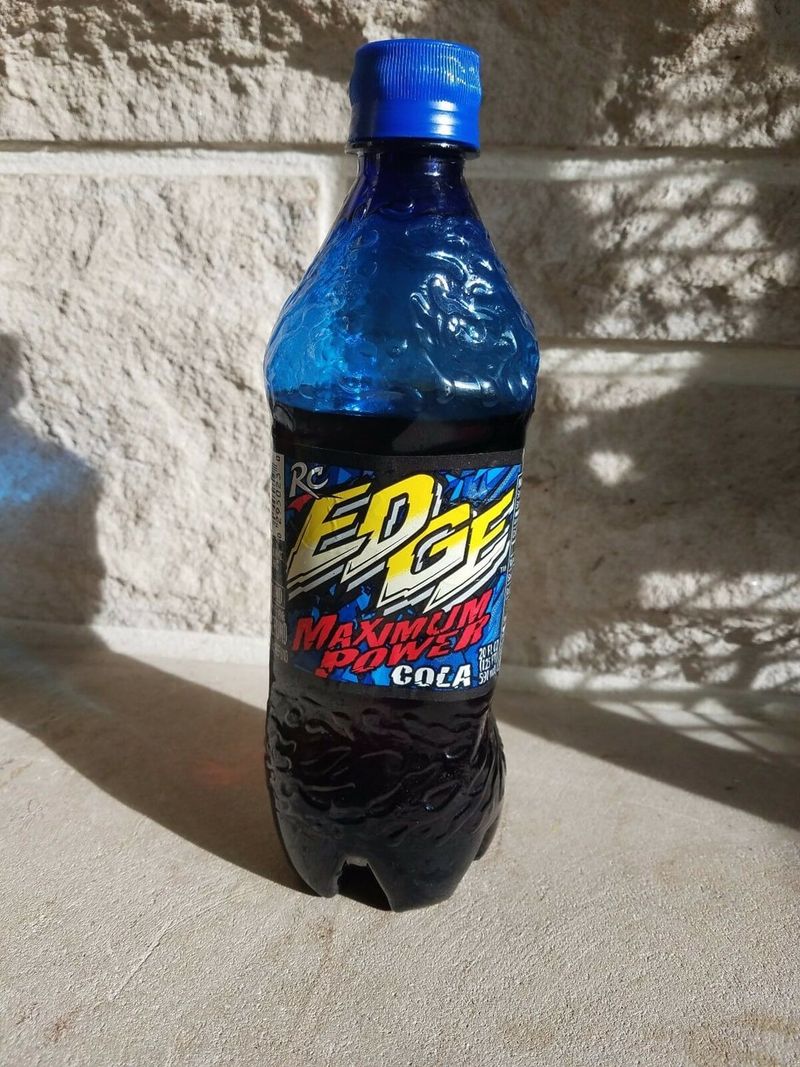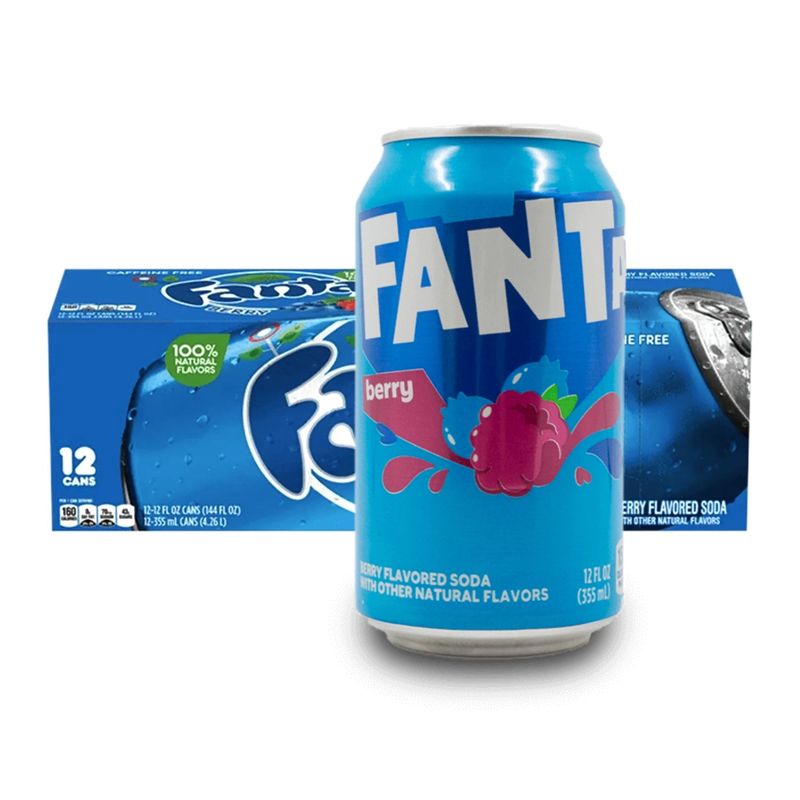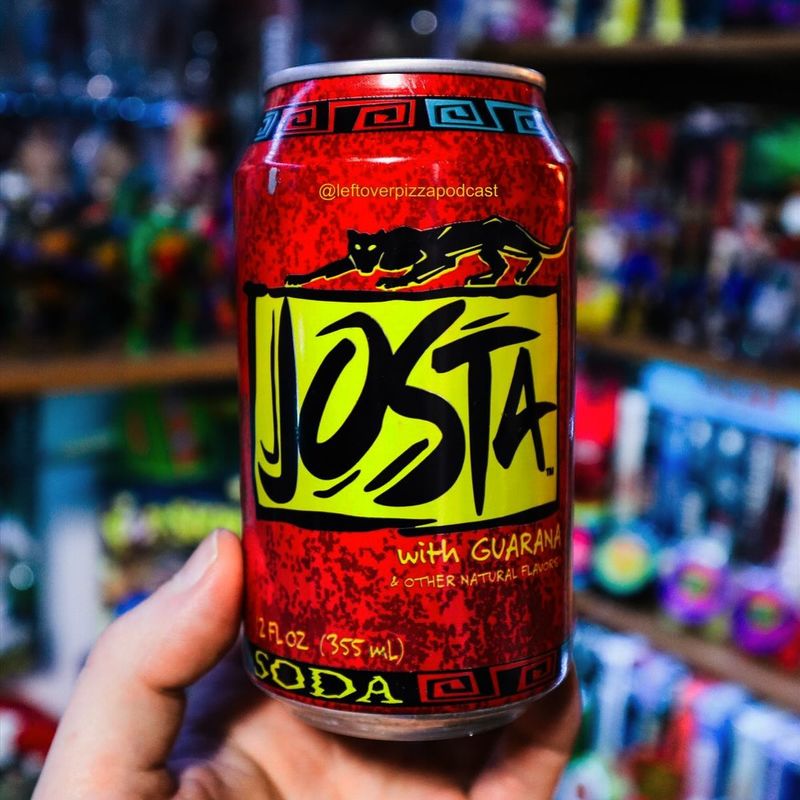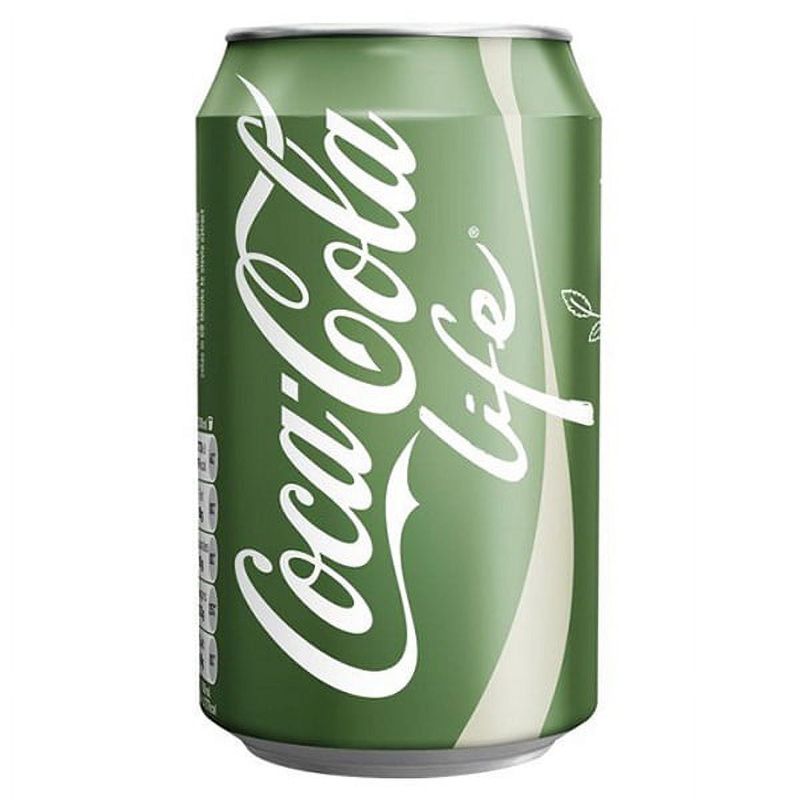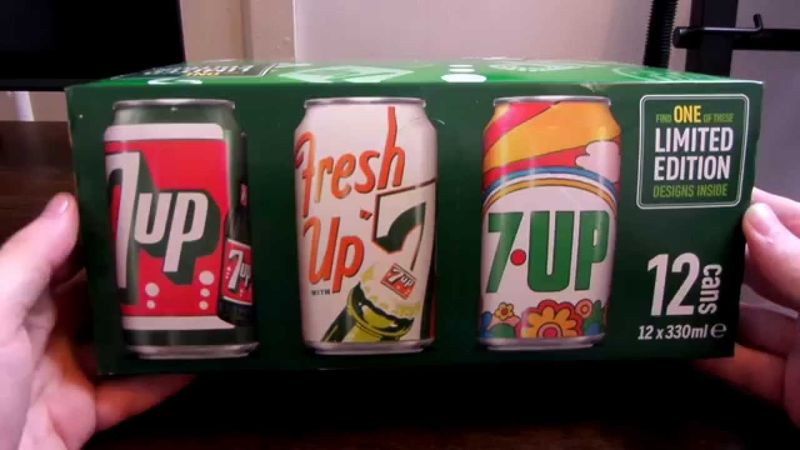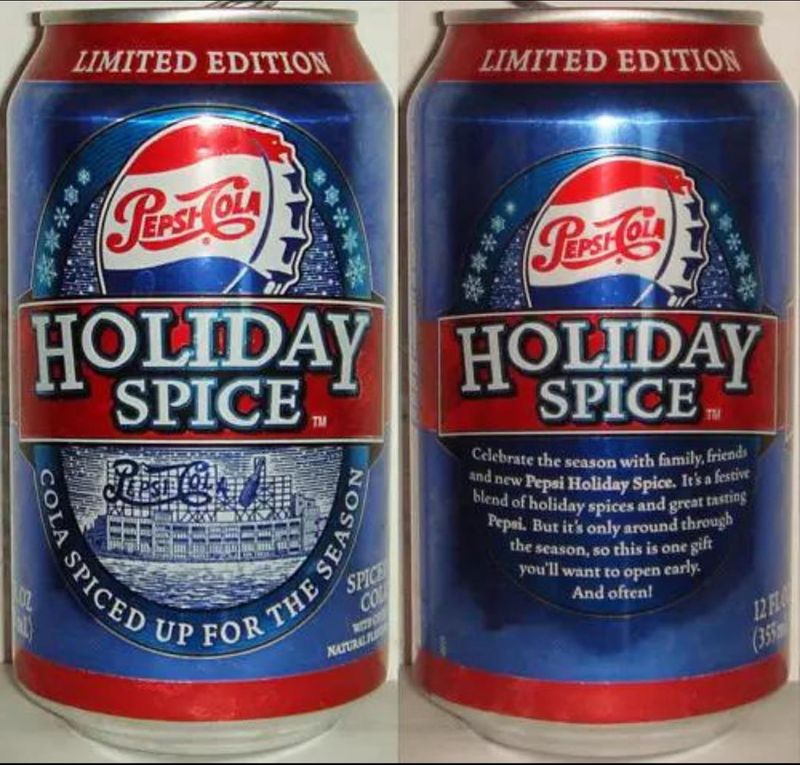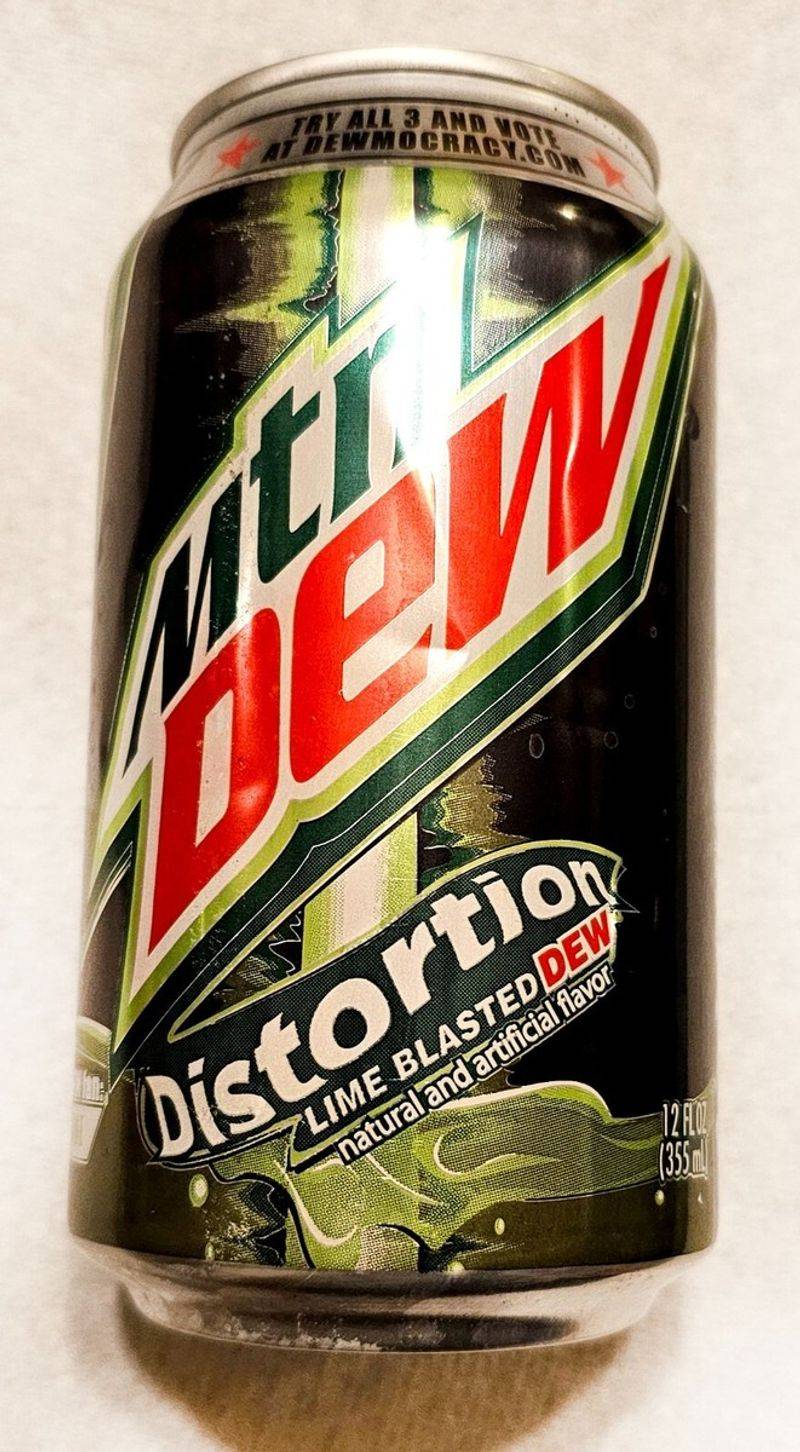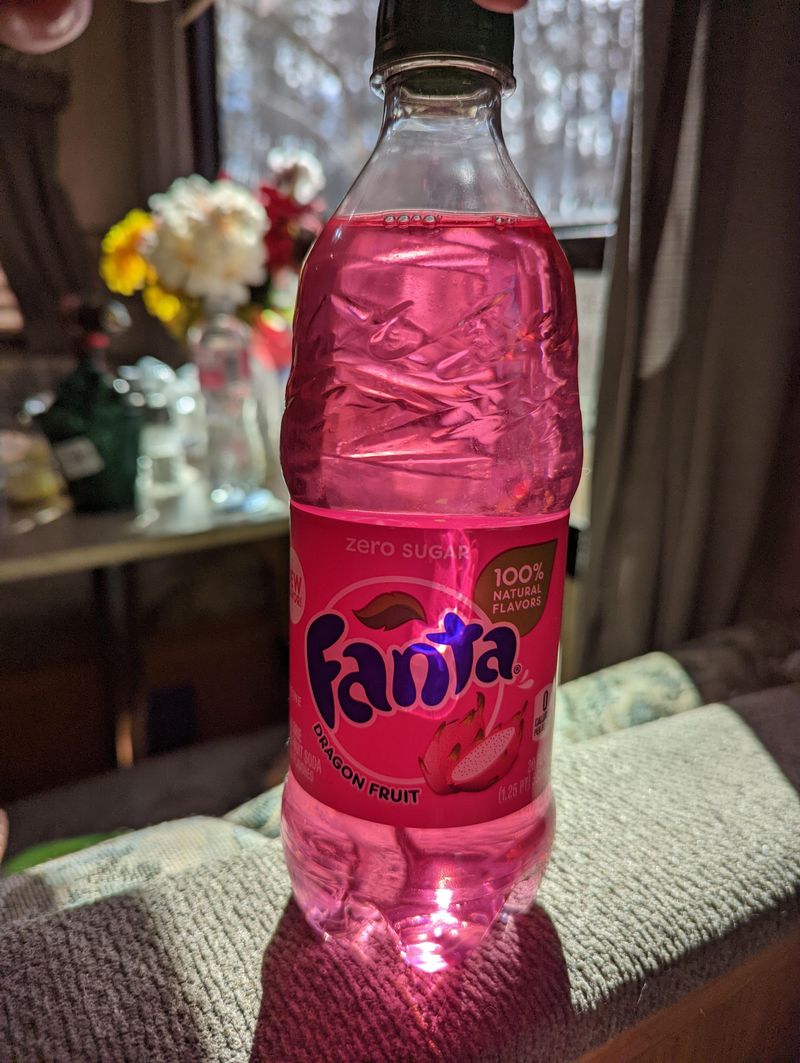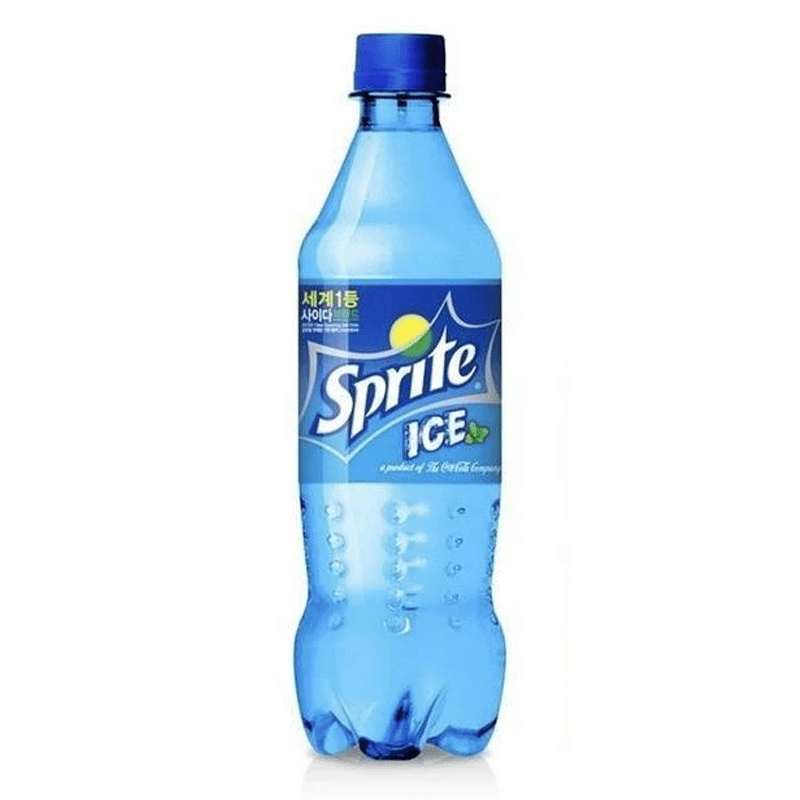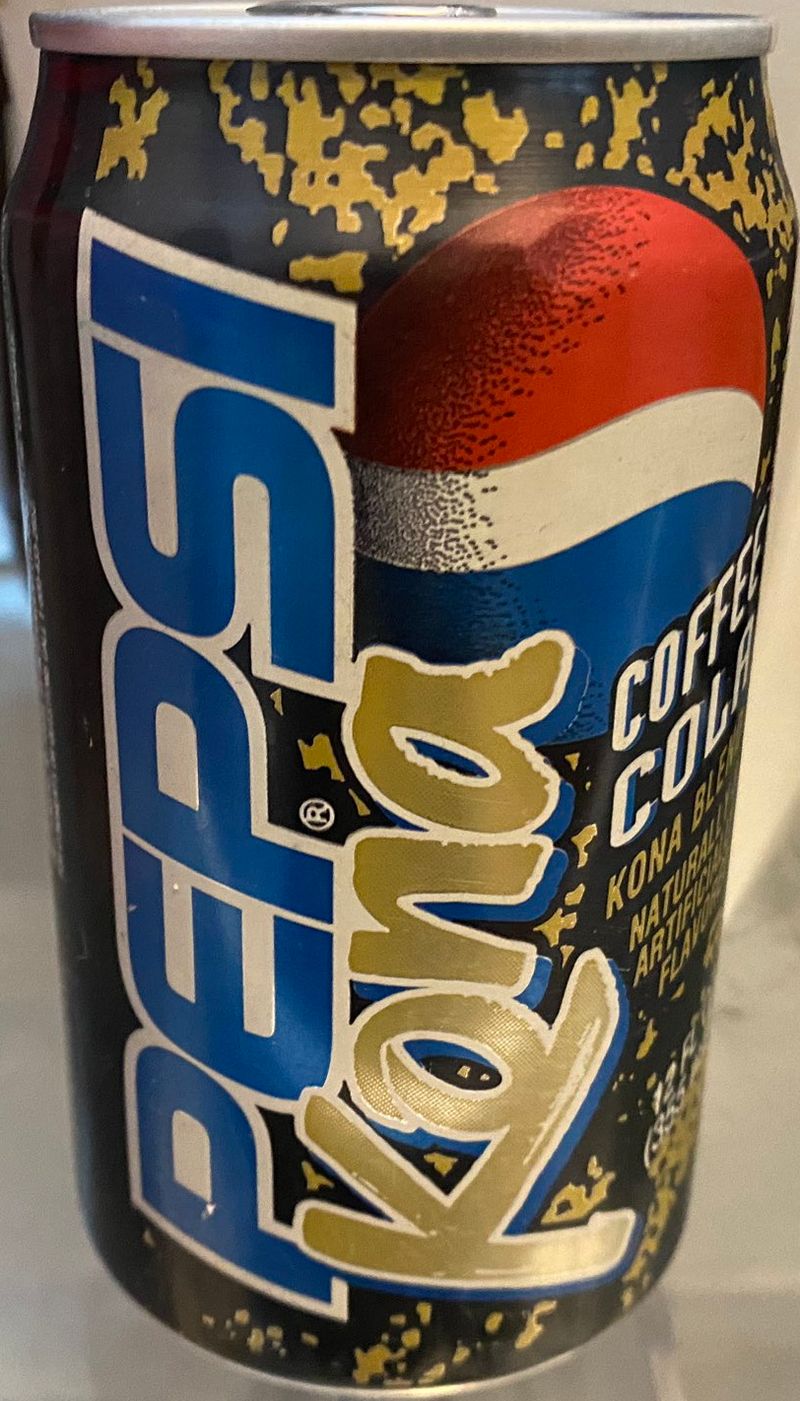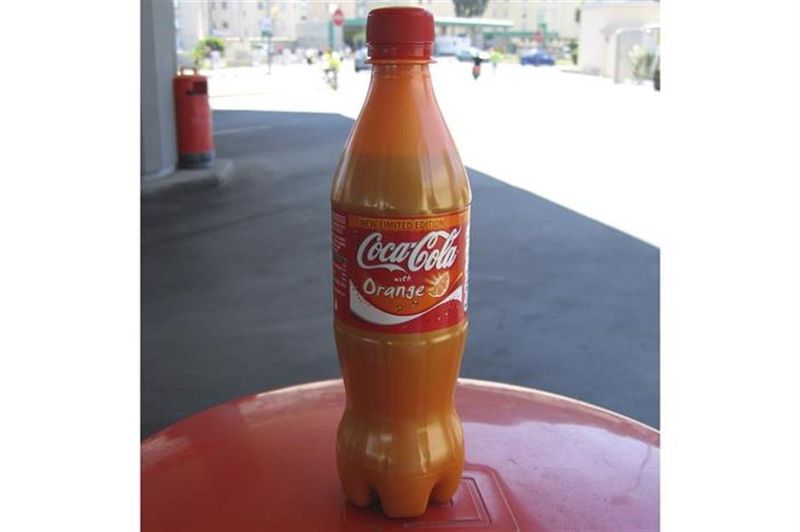Throughout the years, the world of sodas has seen many flavors come and go. While some have become timeless classics, others have faded into obscurity. These are the stories of 30 sodas that once graced our shelves, leaving behind a mix of nostalgia and curiosity. From quirky marketing experiments to flavor profiles that were ahead of their time, each soda has its unique tale of rise and fall. Let’s explore the fascinating world of these discontinued beverages, each with its own story to tell, reflecting a moment in our ever-evolving taste landscape.
1. Crystal Pepsi (1992-1993, 2016 Limited Revival)
Crystal Pepsi, introduced in the early 90s, was marketed as a revolutionary clear cola. The transparency was supposed to signify purity and freshness, a stark contrast to traditional dark colas. Despite the innovative approach, consumers were bewildered by the absence of the expected lemon-lime flavor. Instead, they encountered the taste of regular Pepsi, which led to confusion and dissatisfaction.
The product’s brief revival in 2016 brought a wave of nostalgia but failed to capture new audiences. Crystal Pepsi is a reminder that not all bold ideas resonate with consumers, even if they’re ahead of their time.
2. Pepsi Blue (2002-2004)
Pepsi Blue emerged as a berry-flavored soda, targeting younger consumers with its daring blue color and fruity taste. Initially, it caught the eye with its unique appearance and the allure of something different from the cola giants. However, the flavor, which was similar to other blue beverages like Blue Shock Slurpees, quickly became its downfall.
Consumers found it redundant and unoriginal, leading to its discontinuation. Pepsi Blue serves as an example of how novelty alone isn’t enough to sustain a product in a competitive market, where unique taste and lasting appeal are key.
3. Coca-Cola BlāK (2006-2008)
Coca-Cola BlāK was an ambitious attempt to blend the worlds of coffee and cola into one drink. Launched in 2006, it aimed to appeal to sophisticated consumers seeking a caffeine boost. However, the combination resulted in a complex taste that many found unpleasant. The drink was described as flat Coke mixed with stale coffee, a far cry from the anticipated fusion of flavors.
Despite its innovative concept, Coca-Cola BlāK failed to find its niche and was pulled from shelves by 2008. It remains a fascinating footnote in Coca-Cola’s storied history of experimentation.
4. OK Soda (1994-1995)
OK Soda was Coca-Cola’s foray into the world of Gen X marketing, packaged with irony and existential angst. Its branding was intentionally ambiguous, featuring sardonic slogans and abstract artwork on the cans. This approach aimed to resonate with a generation skeptical of traditional advertising.
Though it captured some attention with its bold marketing, OK Soda’s actual taste failed to impress, leaving it as more of a cultural artifact than a beverage staple. Despite its short-lived presence, OK Soda remains a symbol of 90s counterculture and marketing gone awry.
5. Jolt Cola (1985-2009, Multiple Revivals)
Jolt Cola burst onto the scene in 1985, branding itself as the original energy drink with “all the sugar and twice the caffeine.” It quickly became a favorite among students and gamers who needed an extra jolt to power through late nights. The soda’s straightforward promise of energy without the frills attracted a loyal following.
However, as energy drinks like Red Bull gained popularity, Jolt Cola’s appeal waned. Despite multiple revivals, it struggled to find its place in a market crowded with specialized energy beverages, eventually fizzling out.
6. 7Up Gold (1988-1989)
7Up Gold was an unusual entry into the citrus soda market, introducing a spiced flavor that left drinkers puzzled. With its unique blend of cinnamon and ginger, it tasted like a cross between flat ginger ale and Dr Pepper. The bold choice to diverge from 7Up’s signature lemon-lime profile was intended to attract adventurous palates.
Unfortunately, consumers weren’t ready for such a drastic departure, leading to its quick discontinuation. 7Up Gold serves as a reminder of how drastically altering a beloved brand’s identity can lead to mixed reactions and eventual failure.
7. New Coke (1985-2002, Rebranded as “Coke II”)
In one of the most infamous marketing missteps, New Coke was introduced in 1985 as a reformulation of the classic Coca-Cola recipe. The intention was to modernize the flavor to compete with Pepsi, but the move backfired spectacularly. Loyal customers were outraged, sparking protests and demands for the original formula’s return.
Less than three months later, Coca-Cola Classic was reintroduced, and New Coke was eventually phased out, later rebranded as Coke II before its final discontinuation. This episode remains a textbook case of how consumer attachment to a brand can shape its destiny.
8. Surge (1996-2003, 2014-2020 Revival)
Surge was Coca-Cola’s answer to Mountain Dew, boasting high caffeine and a zesty citrus flavor aimed at teenagers with a taste for adventure. Its vibrant marketing and edgy branding initially captured a fervent fan base.
However, it struggled to compete with Mountain Dew’s established presence and eventually faded from the spotlight. A revival from 2014 to 2020 capitalized on nostalgia but couldn’t sustain long-term success. Surge illustrates the challenges new entrants face in toppling well-entrenched competitors, even with a dedicated fan following.
9. Orbitz (1997)
Orbitz was not just a drink; it was an experience. Introduced in 1997, this soda captivated some and bewildered others with its floating gel balls suspended in a clear liquid. The novelty of chewing your beverage intrigued curious consumers but quickly turned off those who preferred traditional textures.
The unique appearance couldn’t compensate for the polarizing drinking experience, leading to its swift exit from the market. Orbitz remains a testament to how pushing the boundaries of conventional product design can lead to both intrigue and aversion.
10. Tab (1963-2020)
Tab, Coca-Cola’s first diet soda, was a pioneer in the world of low-calorie beverages. Launched in 1963, it captured the hearts of diet-conscious consumers with its unique taste and iconic pink branding. Over the years, Tab developed a devoted following, becoming a symbol of vintage soda culture.
Despite its longstanding presence, declining sales and rising concerns over aspartame led to its discontinuation in 2020. Tab’s legacy lives on in the memories of those who cherished its distinctive flavor and its role in the diet soda revolution.
11. Vault (2005-2011)
Vault emerged as “The Energy Soda,” combining the qualities of a citrus soda and an energy drink. Launched in 2005 by Coca-Cola, it aimed to bridge the gap between casual soda drinkers and energy beverage enthusiasts. With its high caffeine content and potent citrus flavor, Vault offered a robust alternative to Mountain Dew.
However, its similarities to Mtn Dew AMP hindered its differentiation in the market. Unable to carve out a distinct identity, Vault was discontinued in 2011. It serves as a reminder of the importance of unique positioning in a crowded field.
12. Fanta Pina Colada (2000s, Discontinued in U.S.)
Fanta Pina Colada aimed to bring a taste of the tropics to soda lovers with its sweet and creamy coconut-pineapple flavor. While it offered an enticing escapade to sun-kissed beaches with every sip, many found it overly sweet and artificial.
Though it found some success internationally, the U.S. market wasn’t as receptive, resulting in its discontinuation. Fanta Pina Colada highlights the delicate balance between capturing the essence of a beloved cocktail and maintaining the refreshing simplicity consumers expect from a soda.
13. Sprite Remix (2003-2005, 2023 Limited Reboot)
Sprite Remix was a bold experiment in extending the Sprite brand into fruity territories. Introduced in 2003 with berry and tropical varieties, it tapped into the trend for flavored sodas. The vibrant flavors and colorful packaging initially appealed to adventurous taste seekers.
However, it couldn’t sustain interest in a market dominated by more established fruity options like Sprite Cranberry. Despite a limited reboot in 2023, it remains overshadowed. Sprite Remix illustrates the complexities of brand extension and the challenges of maintaining novelty beyond initial curiosity.
14. Dr Pepper Red Fusion (2002-2004)
Dr Pepper Red Fusion was marketed as a daring twist on the classic formula, adding cherry and vanilla notes to the beloved Dr Pepper taste. Launched in 2002, it promised a bold new experience for fans of the brand.
However, many found it reminiscent of cough syrup, dampening enthusiasm and leading to its discontinuation by 2004. Despite its short-lived run, Dr Pepper Red Fusion remains a bold attempt at flavor experimentation, reminding us that even the most beloved brands can stumble when stepping outside their comfort zones.
15. Slice (1984-2000s, Varieties Discontinued)
Slice was PepsiCo’s foray into the world of fruit-flavored sodas, offering a range of options from orange to apple. Launched in 1984, it initially found success by tapping into the growing demand for fruitier alternatives.
However, over time, the market became saturated with similar offerings, and Slice struggled to maintain its edge. Its eventual replacement by Tropicana Twister Soda marked the end of an era. Slice’s journey reflects the competitive nature of the soda industry and the constant need for innovation to stay relevant.
16. Coca-Cola C2 (2004-2007)
Coca-Cola C2 was launched in 2004 as a half-calorie alternative to regular Coke, targeting health-conscious consumers. It promised the classic Coke taste with fewer calories, appealing to those caught between regular and diet options.
Despite its promising concept, many found the taste watered down, failing to satisfy regular Coke fans. By 2007, it was phased out due to lackluster sales. Coca-Cola C2 serves as a lesson in understanding consumer expectations and the challenge of balancing taste with calorie content in the competitive beverage market.
17. Mountain Dew Pitch Black (2004, 2011, 2016, 2022 Limited Runs)
Mountain Dew Pitch Black first appeared in 2004, captivating fans with its dark grape flavor and cosmic theme. It quickly gained a cult following, with fans eagerly anticipating its limited-time returns in subsequent years.
Despite its popularity, it never became a permanent part of the Mountain Dew lineup, leaving fans craving more. Pitch Black’s intermittent availability only fueled its mystique, proving that sometimes scarcity can enhance allure and demand, even if it ultimately leads to eventual discontinuation.
18. Pepsi Fire (2017 Limited Edition)
Pepsi Fire, launched as a limited edition in 2017, brought a spicy twist to the traditional cola with its cinnamon-infused flavor. This bold experiment aimed to ignite curiosity during the hot summer months.
While the fiery kick intrigued some adventurous palates, others found the spice overwhelming, likening it to liquid Big Red gum. The mixed reception led to its swift disappearance, leaving behind a brief but memorable spark in cola history. Pepsi Fire’s short-lived journey reflects the risks of venturing into unconventional flavor fusions.
19. RC Edge (2001-2002)
RC Edge was Royal Crown’s attempt at capturing the energy drink market, branding itself as “liquid adrenaline.” Launched in 2001, it targeted thrill-seekers and those in need of a caffeine boost.
Despite its enthusiastic marketing, RC Edge struggled to differentiate itself amid a rising tide of energy drinks. Its high caffeine content wasn’t enough to sustain interest, leading to its discontinuation by 2002. RC Edge serves as a cautionary tale of how intense competition and lack of differentiation can quickly lead to a product’s demise.
20. Fanta Berry (2000s, Discontinued in U.S.)
Fanta Berry brought a burst of mixed berry flavor to the Fanta lineup, captivating some fans with its vibrant taste and playful packaging. Despite its initial appeal, it faced stiff competition from more established berry-flavored beverages.
The U.S. market saw its discontinuation, though it remains available in select international locations. Fanta Berry’s fluctuating presence underscores the challenges of maintaining market share in a crowded field of fruity sodas, where consumer loyalty can be as elusive as the perfect berry blend.
21. Josta (1995-1999)
Josta, introduced by PepsiCo in 1995, was ahead of its time as the first energy drink in the U.S., featuring the exotic Guaraná berry. The drink aimed to energize consumers with its unique blend, standing out from traditional sodas.
Despite its early entry into the energy market, Josta’s niche appeal couldn’t sustain long-term success. Discontinued in 1999, it remains a fond memory for fans who appreciated its distinctiveness. Josta’s journey reflects the challenges of introducing groundbreaking products before the market is ready to embrace them.
22. Coca-Cola Life (2014-2017, Discontinued in Most Markets)
Coca-Cola Life was introduced in 2014 as a lower-calorie alternative, sweetened with stevia and sugar. It aimed to cater to health-conscious consumers seeking a natural sweetener without sacrificing taste.
However, its higher price point and the taste’s failure to fully satisfy regular Coke enthusiasts led to its discontinuation in most markets by 2017. Coca-Cola Life highlights the delicate balance of health trends, cost considerations, and flavor expectations that companies must navigate to achieve lasting success in the beverage industry.
23. 7Up Retro (2019 Limited Edition)
7Up Retro made a brief reappearance in 2019, embracing nostalgia with its real sugar formulation and vintage-themed packaging. It sought to capture the hearts of those longing for the original taste and aesthetic of past decades.
Despite the initial excitement, it was only a limited edition and did not sustain a permanent return. 7Up Retro serves as a reminder of the powerful allure of nostalgia in marketing, yet also the limitations of relying solely on past glories to engage new generations.
24. Pepsi Holiday Spice (2004-2006)
Pepsi Holiday Spice brought a festive twist to the cola category with its nutmeg-infused flavor, aiming to evoke holiday warmth and cheer. Launched for the winter season in 2004, it offered a unique seasonal alternative to the usual cola fare.
However, its distinct flavor failed to capture widespread affection, leading to its discontinuation by 2006. Pepsi Holiday Spice stands as an example of the challenges of seasonal product offerings, where fleeting novelty can overshadow lasting appeal.
25. Mountain Dew Distortion (2010 Limited Edition)
Mountain Dew Distortion was part of the “DEWmocracy” campaign in 2010, where fans voted for new flavors. This lime-infused variant appealed to those seeking a tart twist to their classic Dew experience.
Despite its initial popularity, it lost out to the winning flavor, White Out, and was discontinued. Mountain Dew Distortion reflects the dynamic nature of consumer-driven campaigns, where even popular and innovative flavors can face an uncertain future in the competitive soda landscape.
26. Fanta Dragonfruit (2020 Limited Edition, Discontinued)
Fanta Dragonfruit was a bold entry into the tropical soda category, offering an exotic pink hue and distinctive flavor. Released as a limited edition in 2020, it aimed to tantalize taste buds with its unique profile.
Despite its vibrant appeal, it struggled to capture the same enduring fan base as more established tropical flavors like Strawberry Fanta. Its brief presence highlights the intense competition and shifting consumer preferences in the ever-evolving world of sodas.
27. Sprite Ice (2001-2003, 2019 Limited Return)
Sprite Ice was an adventurous twist on the classic lemon-lime formula, introducing a minty kick to the mix. First launched in 2001, it intrigued those seeking a new kind of refreshment.
However, the unique flavor combination was too unconventional for many, leading to its discontinuation in 2003, with a brief return in 2019. Sprite Ice exemplifies how bold flavor experimentation can generate both curiosity and hesitation, ultimately shaping its market fate.
28. Pepsi Kona (1996)
Pepsi Kona was an early attempt to infuse cola with coffee, launched in 1996. This bold experiment aimed to satisfy java enthusiasts with a blend of Pepsi’s signature taste and rich coffee undertones.
However, the combination was met with mixed reactions, with some finding the flavor discordant. Pepsi Kona was discontinued after a brief run, paving the way for future coffee-cola hybrids like Coca-Cola BlāK. Its story is a testament to the challenges of merging two distinct beverage worlds.
29. Coca-Cola Orange (2007, UK & Australia Only)
Coca-Cola Orange, launched in 2007 in the UK and Australia, was an attempt to add a citrusy twist to the classic cola. It offered a refreshing alternative to traditional flavors, appealing to those seeking a summer-themed beverage.
Despite its initial appeal, it didn’t achieve widespread success and was eventually discontinued, making way for later variations like Orange Vanilla Coke in the U.S. Coca-Cola Orange serves as an early exploration into citrus-infused colas, paving the way for future flavor innovations.
